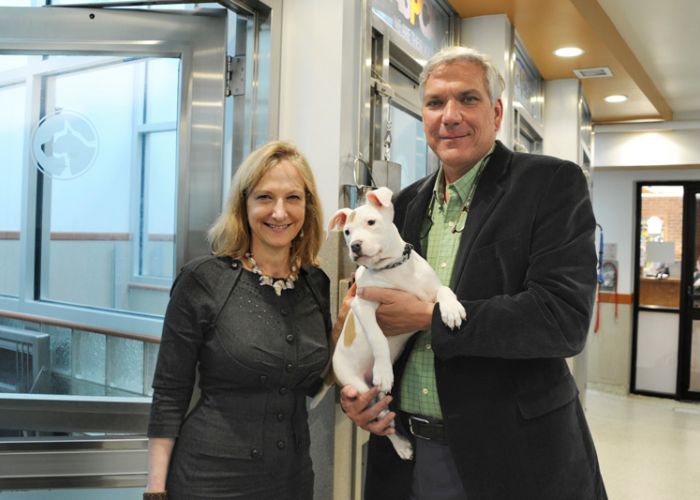All dogs are equal
In the debate over breed discrimination, common sense and science are unraveling decades of misinformation and bad policies

By the time Katie Barnett arrived on the scene, her future dog had already gone through a lot in her short life. The tan-and-cream terrier was found stranded atop a tin roof shed in New Orleans’ flooded 9th Ward in the aftermath of Hurricane Katrina. Rescuers took her to an emergency animal shelter in Tylertown, Miss., where she lived amidst the chaos of makeshift kennels, rotating volunteers and nightly deliveries of more displaced animals.
Barnett was two years out of college, living in a suburb of Kansas City, Kan., when the hurricane hit. After watching the devastation unfold night after night on TV, she requested a week of vacation time from her job, contacted the Humane Society of Louisiana and convinced a friend to join her. The two women tossed a tent in the car and drove 14 hours, arriving in Tylertown at 3 a.m. The next days passed in a blur of cleaning, walking, feeding and helping to soothe hundreds of animals.
Among them was the young dog from the 9th Ward. “Every time I’d go into her run to feed her or give her what she needs, she had such great body language,” Barnett remembers. “Just to think of everything she’d been through, and she was still able to be calm and comfortable.”
When the dog wasn’t claimed, Barnett was given permission to take her home. She named her Katrina. In Kansas, the dog quickly befriended Barnett’s rottweiler-Catahoula mix and settled into apartment life.
Everything was going smoothly when Barnett got the call from animal control. Someone in her complex had reported seeing her with a pit bull, a type of dog deemed dangerous under local ordinance and forbidden in the city.
It was the first she’d heard of a city banning a particular type of dog, but she wasn’t overly worried. “I had this stereotypical image of a pit bull: cropped ears, big huge head, big stocky body, probably bigger than my rottweiler mix.”
Katrina was only 35 pounds—the size of the sheltie Barnett had grown up with—and her shelter paperwork identified her as a Staffordshire bull terrier.
“Come meet my dog,” Barnett told the animal control officer. “I’m pretty sure I don’t have a pit bull.”
It was the beginning of a journey that she had never expected.
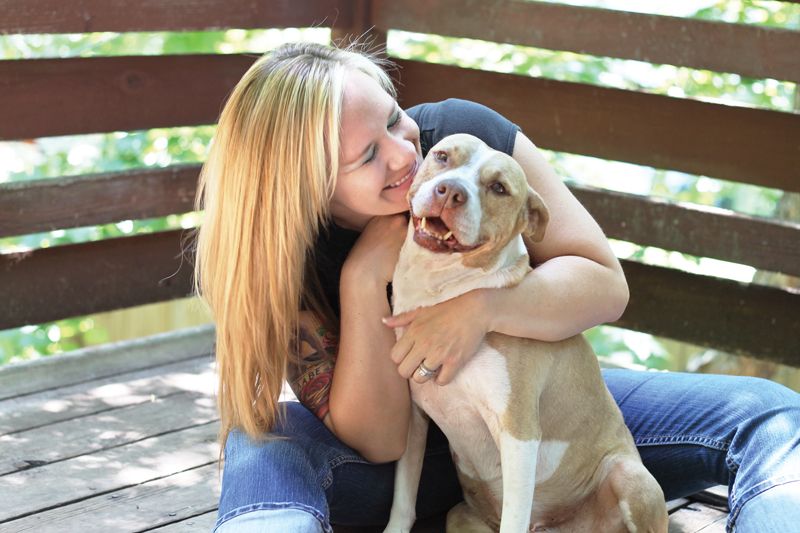
Skin Deep
Breed prejudice isn’t new. In The Pit Bull Placebo, Karen Delise, founder of the National Canine Research Council (NCRC), describes how, in the 19th century, the feared breed was the bloodhound, whose reputation for viciousness was fed by their association with slave catchers. Newspapers fed the stereotype, writing about the dogs’ “ferocious instincts,” “thirst for blood” and “savage fury.”
But while public fear of certain breeds isn’t a 21st century development, breed-specific legislation (BSL) was rare until the 1980s, when some cities, counties and even states began to ban or restrict dogs based on their perceived breed.
Some laws covered a variety of breeds, including rottweilers, German shepherds, chow chows, Dobermans and malamutes. But the most common targets were dogs deemed “pit bulls”—not an actual breed at all, but a catchall term that is frequently applied to short-haired, blocky-headed dogs of all sorts.
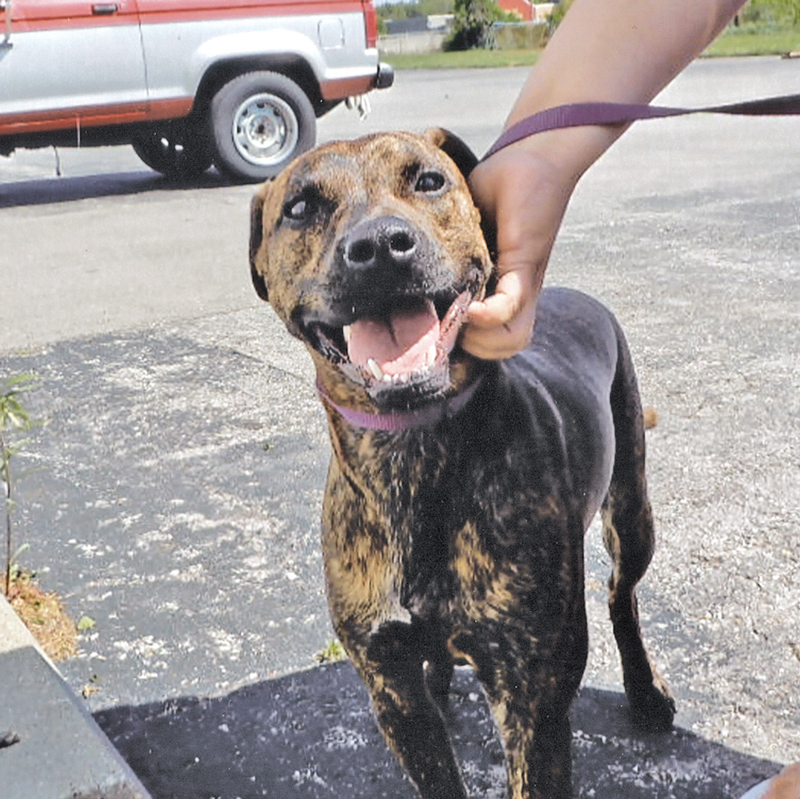
From the beginning, the laws were controversial. Owners of targeted dogs fought back in legislatures and courts around the country. “Deed Not Breed” became the rallying cry of people arguing that their pets should be judged by their behavior, not by their resemblance to a dog across town or in another state. But until recent years, such arguments more often than not fell on deaf ears.
These days, a growing body of scientific evidence has brought powerful allies to the movement to stop targeting dogs based on physical characteristics. The Obama administration, American Bar Association, American Veterinary Medical Association, U.S. Centers for Disease Control and Prevention, National Animal Control Association and nearly every national humane organization have voiced their opposition to BSL.
Even one of the nation’s largest insurance companies has a stance on the issue. “We’re the company at the most risk when it comes to dog bites,” says Heather Paul, State Farm public affairs specialist. “So if we recognize that breed is not an issue … that really accounts for something.”
After Ohio repealed its statewide pit bull ban in 2012, State Farm—which has long had a policy of not discriminating against dogs based on breed or appearance—reported a decrease in the number of dog-bite-related claims in the state. “There’s nothing more conservative than an insurance company,” says Paul. “This risk is not a real risk for us.”
Since January 2012, more than 120 U.S. municipalities have removed their breed-based laws, according to the NCRC. There are no more statewide breed-specific laws in the U.S., and 19 states have prohibited local governments from passing BSL.
Discrimination Nation
During his 17 years as an animal control officer in the Kansas City metro area, Eric Thompson was responsible for enforcing breed bans in two cities. Currently the director of disaster response at Code 3 Associates, a nonprofit that trains animal control staff in cruelty investigations, Thompson says he’s never worked with an animal control officer who’s favored BSL, “because we saw how it didn’t work in the field.”
“BSL is a dying trend,” says Cory Smith, director of pet protection and policy at The HSUS. “It’s highly unlikely that any BSL is going to get through any state legislature in the future. That’s an exciting place to be, because it gets us closer to having safe communities. When dogs are regulated by breed, it puts communities further away from establishing truly effective dog law.”
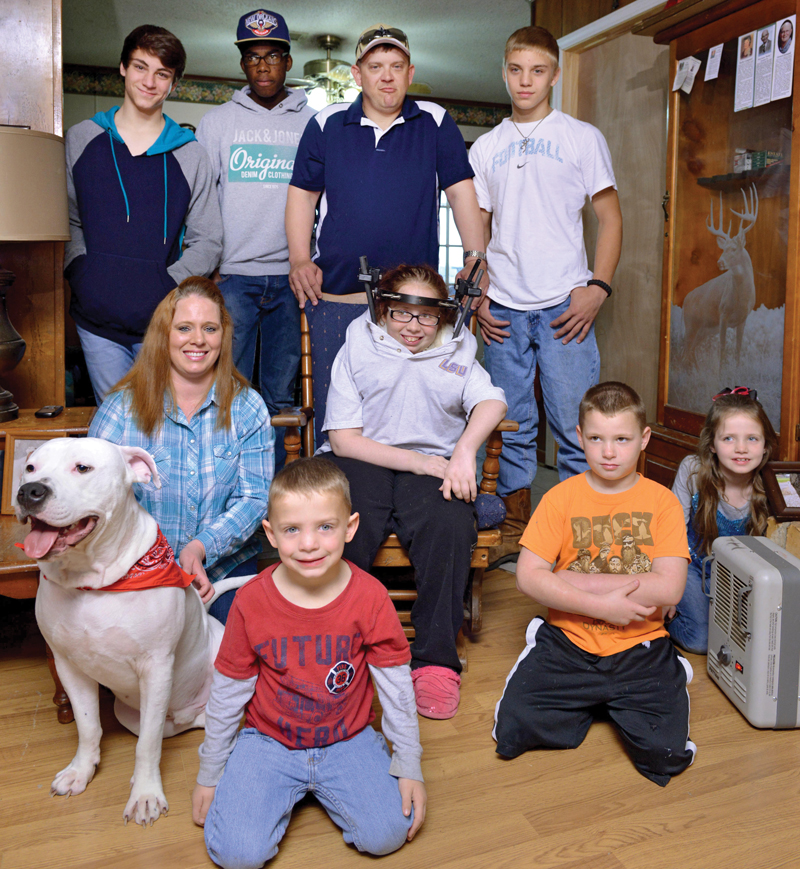
Enforcing breed bans was also emotionally draining and contributed to burnout among his officers. “It was a gut-wrenching experience to tell these people that, ‘I’m sorry, your dog falls under the breed-specific law by definition, and you’re going to have to get rid of it,’” he says. “The worst part was them trying to plead and find ways around it.”
He had to remind himself and his co-workers that while they didn’t write the laws, it was their duty to enforce them. In 2006, that duty brought Thompson to Barnett’s door.
Barnett listened in shock as he explained that Staffordshire bull terriers—along with American Staffordshire terriers, American pit bull terriers and their mixes—are considered “pit bulls.” And that they and any dogs with the misfortune to resemble them were illegal in the city.
Her choices were limited: She could get rid of Katrina, or she could leave town.
“I knew that I’d do anything for her, even though I’d only had her for a couple of months,” Barnett says. So she rented a duplex just 10 miles away in the city of Olathe, which had no breed ban.
Being forced into an unplanned move wasn’t pleasant, but it could have been much worse. Many families threatened with the seizure of a beloved dog can’t move, Smith points out. They may not have affordable options. They don’t feel empowered to fight the system, or even realize fighting is an option. Afraid of losing their housing, or intimidated by the threat of fines they can’t afford, many reluctantly give up or try to rehome their pets. Others take their dogs “underground,” forgoing veterinary services and social interactions for fear of being separated from their animals.
In the city where Barnett was living at the time, the policy was to give owners 24 hours to get rid of the dog and to issue a citation that would require them to appear in court and pay a fine for violating the ban.
But Thompson had also spent time in the Gulf Coast in the wake of the hurricane, and since he could also see that Katrina was “the sweetest animal,” he gave Barnett a break.
“I literally pulled hundreds and hundreds of animals out of [New Orleans] for a week,” Thompson says. “It was important for me at the time that those animals had a chance at a second life, and that life wasn’t going to involve me impounding that dog after it’d been through what it had already been through.”
So Barnett never went to court, and she never lost custody of her dog. But the injustice still rankled. She did some research and discovered that similar laws existed in hundreds of communities across the country. That was when she made another decision: “I said, ‘You know what? I’m going to law school.’”
Within a few years, she would be using her law degree to help people and dogs targeted by breed bans. And she and Thompson would meet again—this time as allies in the fight to repeal such laws.

Breaking the Bias
In a nation where at least half the 83 million dogs are mixes, one factor that began to expose the flaws of BSL was the unreliability of visual breed identification. Advances in canine DNA testing enabled researchers to show what many people in animal welfare already suspected: Those who guess at a dog’s breed based on her looks are more often wrong than right.
“I’ve seen too many puppies born of mothers who looked like a pit bull but who themselves would be described as beagles, or Labradors, or other breeds,” wrote Lisa LaFontaine, president and CEO of the Washington (D.C.) Humane Society, in an article opposing BSL.
But the central dispute still remained: Does a dog’s breed or physical type make him a threat to public safety? After all, dozens of breeds and mixes—including Pomeranians, Yorkshire terriers and golden retrievers—have been involved in serious attacks on people.
It’s taken decades of research and advocacy efforts to shift the tide in this debate. Looking at controlled studies of bite incidents and canine aggression, the American Veterinary Medical Association concluded that pit-bull-type dogs are not “disproportionately dangerous.” In a study published in the Journal of the American Veterinary Medical Association, researchers examined serious dog attacks and found that breed was not a significant “co-occurrent factor.”

Perhaps most compelling is the evidence from communities with long-standing breed bans. Denver, Colo., which enacted a pit bull ban in 1989, had a significantly higher rate of dog-bite-related hospitalizations from 1995-2011 compared to its breed-neutral neighbors. A task force studying the impact of a breed ban in Prince George’s County, Md., determined that the county spent at least $560,000 from 2001-2002 to round up and euthanize “pit bulls,” and that the ban produced no measurable public safety benefits. Studies of the impact of BSL in other cities and even entire countries have likewise revealed their ineffectiveness, prompting Italy and the Netherlands to repeal their breed bans.
In places like Miami, Fla., decades-old breed bans haven’t even produced a noticeable reduction in targeted breeds in the community, says Smith. “Dogs called ‘pit bulls’ are incredibly popular dogs, and a breed ban does not stop people from having them. You cannot pass a law expecting a breed or type of dog to become nonexistent; it’s not going to happen.”
As Stacey Coleman, executive director of the Animal Farm Foundation in Dutchess County, N.Y., notes: “Nowhere that [BSL] has been tried has it been successful.”
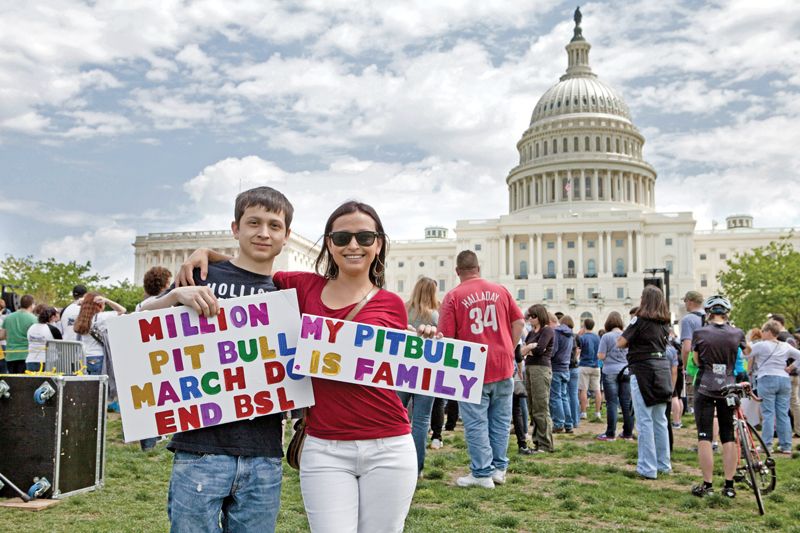
Laws of Unintended Consequences
When it comes to dogs and public safety, Smith says, the question isn’t whether “pit bulls”—or any type or breed—is “good” or “bad.”
“Dogs are dogs are dogs,” says Smith. “The HSUS supports dog regulations. There has to be liability for dangerous dog behavior, but we know that such behavior can occur with any breed or type of dog. Breed-neutral dog law is the most effective at accomplishing public safety goals, period.”
In an era of shrinking municipal budgets, laws based on breed could actually result in an increase in dog bites, Smith says, by directing overtaxed animal control resources at the wrong strategy.
That’s the argument Thompson and Barnett made when, years after their first meeting, they joined forces to fight BSL in the Kansas City metro area.
By then, Thompson was the animal services supervisor in Overland Park, Kan. He had six officers working under him, handling animal issues in a city of more than 150,000 people. That would have been challenging enough, but the city also had a breed ban.
Whenever someone called to report a “pit bull,” the initial response took an average of four hours. The officer would interview neighbors and the owner, take pictures of the dog and compare the dog against a 17-point checklist of kennel club breed standards for the three recognized breeds covered by the law. Owners of a dog deemed illegal had 48 hours to get their pet out of the city, and the officer would have to physically verify that the dog was at the new location. “And then we had to go through the court procedures,” Thompson says.
Even dogs who were eventually found to be legal took a significant chunk of time: If an owner took any large, blocky-headed dog for a walk in the park, “we’d get 10 calls,” Thompson says. Eventually, the department was forced to develop a tracking system and issue tags for dogs who had passed inspection.
At the same time, Thompson’s team juggled calls from people who thought any large dog was a banned type, and emails from people who were moving to the area and wanted assurance that their dog would be allowed. And there were the people who were simply passing through the city with a dog in their car: “Somebody would see it, and they’d actually call the police department to have that person detained while we had to do a breed ID on that animal,” Thompson says. Licensing added more work. The license clerks “knew immediately if they saw ‘terrier’ on license paperwork, that was going to be yet another investigation for us, because, well, is that a Jack Russell terrier or an American Staffordshire terrier?”
And all the while, he and his staff knew there were “other calls going on, including injured animals that may be wild or domestic that need help, dog bites that are going on, complicated running-at-large or property destruction issues, [and] it’s taking us away from other duties. … A lot of calls remained in queue with dispatch for a long time.”
Smith points out that while breed-based laws add countless hours to an animal control agency’s plate, they rarely come with funding to support the costs of enforcement, which may include investigations, veterinary care, behavior assessment, court costs, holding and euthanizing or transferring dogs who have done nothing to endanger the community.
Private animal agencies also feel the effects. With facilities in Merriam, Kan., and Independence, Mo., the Great Plains SPCA is surrounded by cities and counties with a patchwork of breed bans and other restrictions. Because fewer people can adopt or foster them, targeted dogs stay four to six times longer at the shelter, taking up space and staff time, says Courtney Thomas, Great Plains SPCA president and CEO. “It impacts our ability to help even more animals inside or outside our community.”
The Road Ahead
While BSL continues to be an issue in communities where “there’s this old law in place, and local officials are afraid of overturning it,” Smith believes it’s only a matter of time before such laws are a thing of the past. “We have all this good supporting information that shows that when BSL is repealed, nothing horrible happens.”
The future challenge, Smith says, “will be on lifting breed restrictions in rental housing, which affect an even larger number of people and pets.”
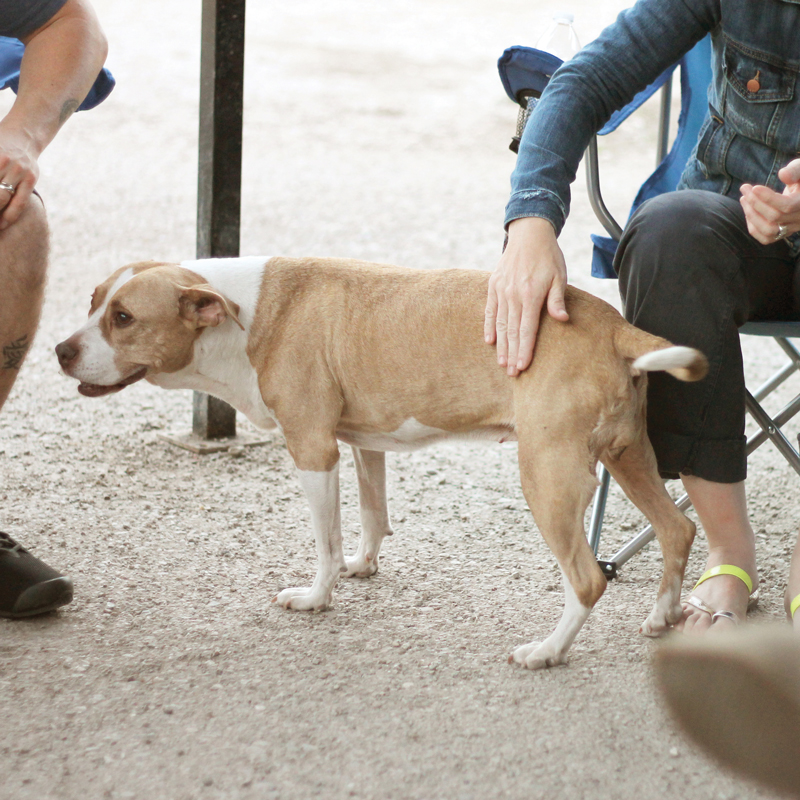
Addressing those housing issues is now a priority at The HSUS, even as the organization—along with other national and local advocacy groups and individuals—continues to chip away at breed-based laws. Through her law office, Barnett works with HSUS state representatives and other allies to keep up the trend in the Kansas City metro area: Since 2012, nearly 15 municipalities in Kansas and Missouri have replaced their BSL with more effective, breed-neutral animal ordinances.
Barnett’s seen successes in places like Osawatomie, Kan., where every council member was “open to learning and asked the most amazing questions to make the most informed decisions for their citizens.” And she’s had setbacks in places like Overland Park, where she says some city officials think that the breed ban “is great and that only gangsters and thugs have pit bulls.”
In her ongoing work, Barnett meets with residents and neighborhood associations to learn what the real animal issues are in a community. In Kansas City, Kan., she discovered that what residents are truly concerned about is the city’s feral dog packs. So she asked officials not only to repeal the city’s breed ban, but to unfreeze three animal control positions (the city currently has a third the number of animal control officers as is recommended for a community its size, Barnett says).
Last year, officials declined those requests and only agreed to fund the purchase of four additional dog traps. But Barnett was recently retained by the city to develop a plan for a safer, more humane community, and she hopes for a better result this year. “It seems like the most effective way to ensure a safer community is to make sure that animal control is out there doing their job and not spending time rounding up people’s pets because of the way they look,” she says.
Barnett was in a meeting with Kansas City officials last year when her husband called with some bad news: Katrina had died in her sleep. The dog who had survived a hurricane, who had the wrong looks for much of Kansas, had ended up leading a long, happy life.
She was the star at the doggie day care owned by Barnett’s husband, where she was known for her love of people and her calming effect on other dogs. She also participated in a program for human and canine victims of trauma: Katrina “helped everyone stay in line and feel comfortable, dog-pack-wise,” says Barnett, “and helped facilitate mindfulness exercises with the people.”
Barnett never had her dog’s DNA tested, because she knew Katrina’s breed didn’t matter: Like every dog, she had her own unique personality. No matter what she looked like, she was what Barnett knew her to be—a gentle soul to the very end.



